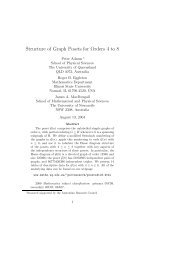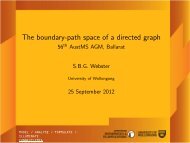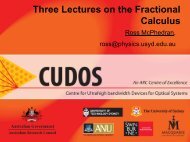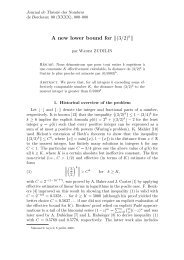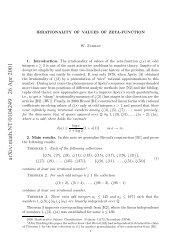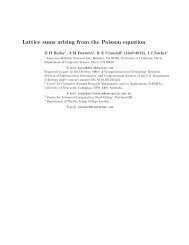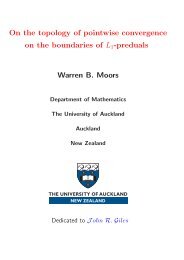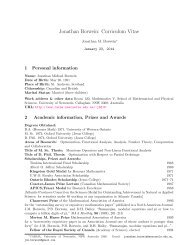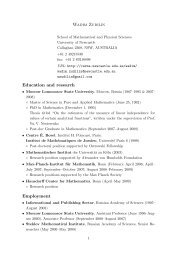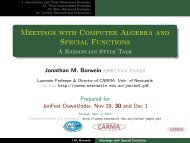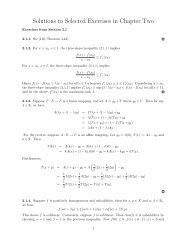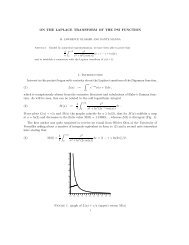QUADRATIC CONVERGENCE OF THE TANH-SINH ...
QUADRATIC CONVERGENCE OF THE TANH-SINH ...
QUADRATIC CONVERGENCE OF THE TANH-SINH ...
Create successful ePaper yourself
Turn your PDF publications into a flip-book with our unique Google optimized e-Paper software.
<strong>QUADRATIC</strong> <strong>CONVERGENCE</strong> <strong>OF</strong> <strong>THE</strong> <strong>TANH</strong>-<strong>SINH</strong> QUADRATURE RULE 15since the first integrand is decreasing. The latter integral evaluates to 1.(b) In this case the order termO(e −A/h)shows quadratic convergence as h → 0, because when h is halved, e −A/h will besquared. Similarly,)O(C(h)e − eN−1πexhibits exponential convergence as N → ∞.6. Analysis for Error Function and Other TransformationsAs shown in Figure 1, tanh, tanh-sinh and error function have very similar properties:absolutely continuous monotonic increasing functions mapping (−∞, ∞)onto (−1, 1), infinitely differentiable and every order of their derivatives quicklyvanishes at infinity. It’s not surprising that a similar approach can be appliedto analyze the convergent property of error function and more generally, to anytransformation with the property above.For example, the error quadrature uses the transformation:(6.1) ψ(x) = erf(x) = √ 2 ∫ xe −t2 dtπwith0ψ ′ (x) = 2 √ πe −x2As in section 3, one can introduce a corresponding space G ∗ 2 ,which contains theset of functions of the formG 2 ∗ then has a reproducing kernelψ ′ (w)f (ψ(w)) f ∈ H 2 and ψ as in (6.1).̂K(z, w) = 1/=()1 − ψ(z)ψ(w) · ψ ′ (z) · ψ ′ (w)4π (1 − erf(z)erf(w)) · e−z2 e −w2The approximation error ||Êh,N || can still be divided into 4 parts as in (4.1) ande 2 = e 3 = h ∑Ê h F nhwheree 4 = 4 π∑|r|,|n|>N|n|>Ne −r2 h 2 e −n2 h 21 − erf(rh)erf(nh)F nh := P nh,(w) ̂K(z, w)= 4 πe −z2 e −n2 h 21 − erf(z)erf(nh) .In order to evaluate e 1 , one need to find out the poles of11 − erf(z)erf(w) .□



